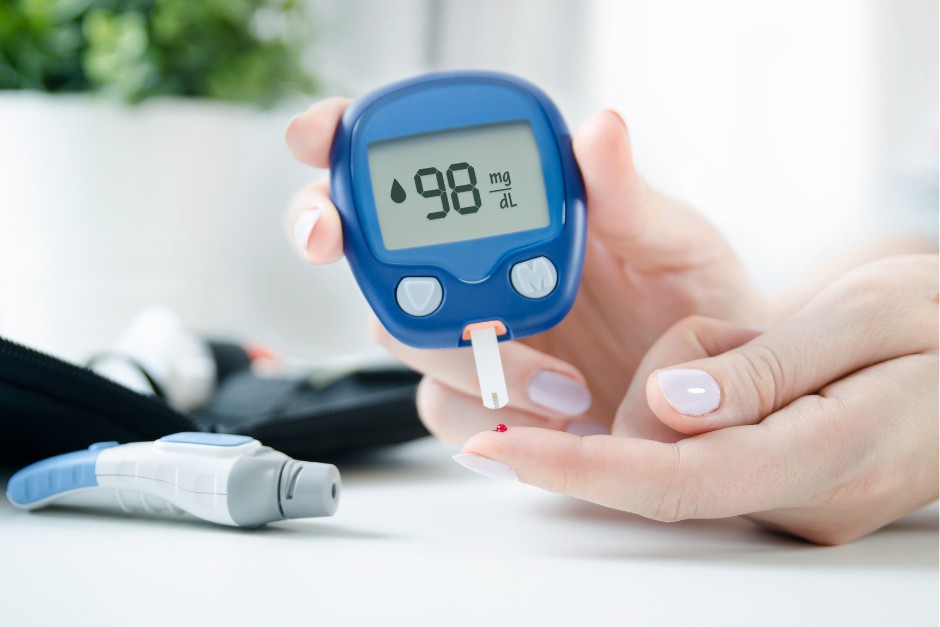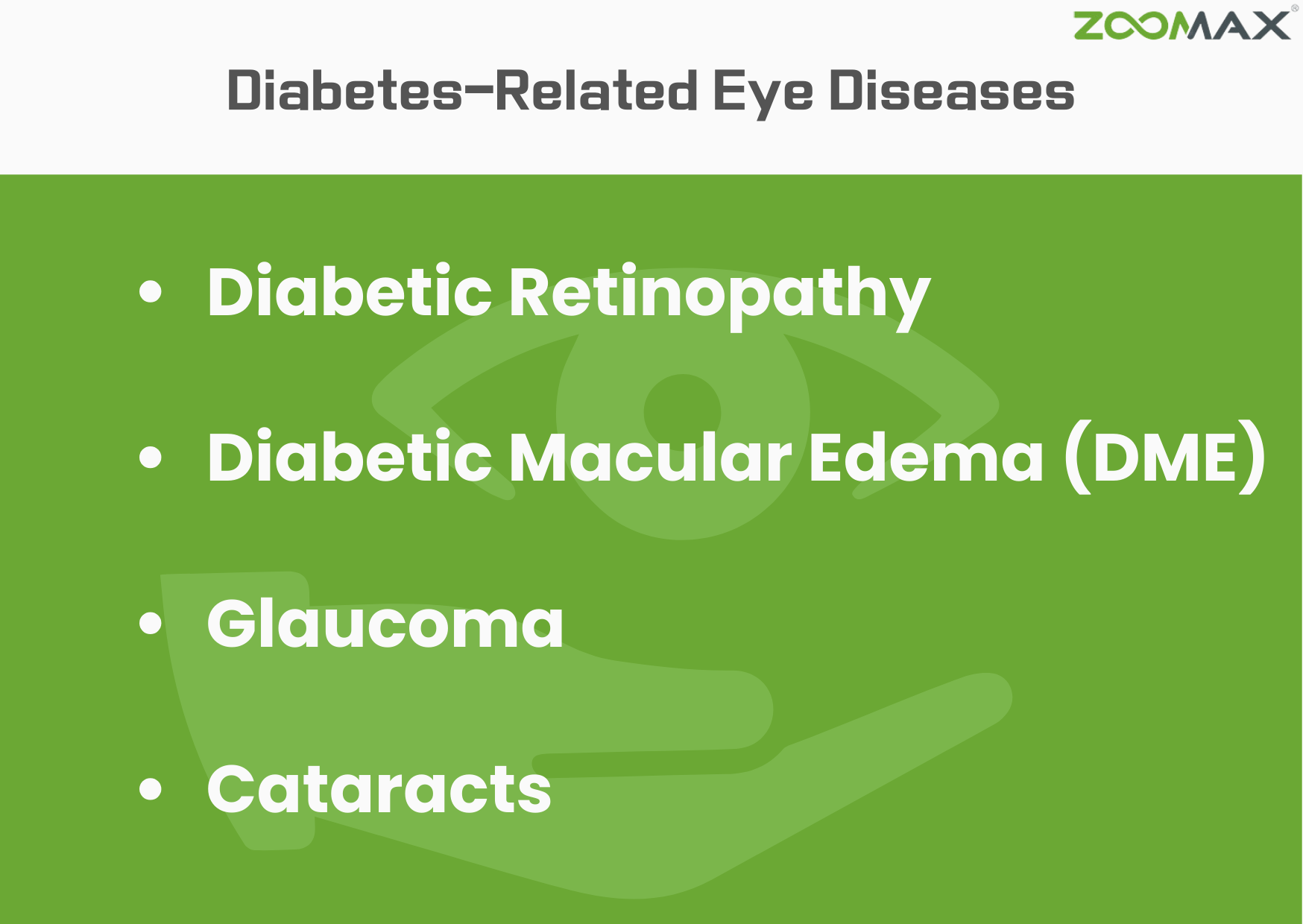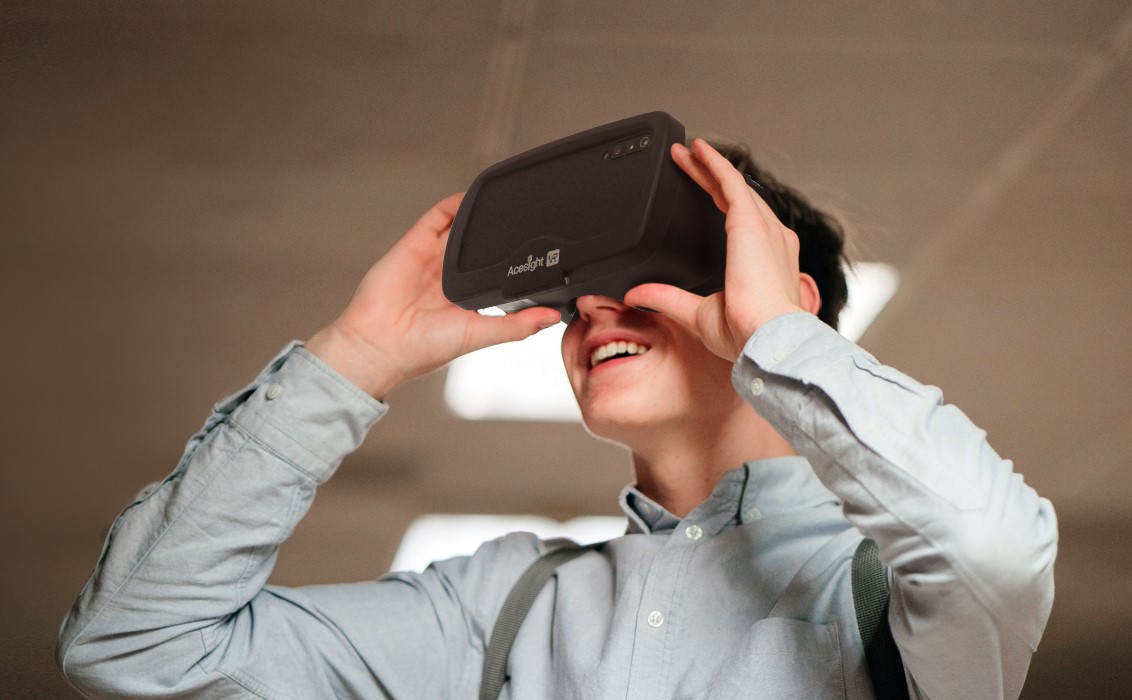Have you ever wondered about the quiet stories that our eyes tell, the interesting tales that are tucked in the delicate fabric of our health? Our eyesight, a trusted companion in navigating the world, may also be a telling sign of our general health. In our quest into the relationship between diabetes and vision – we set out to explain the subtle hazards posed by diabetes-related eye diseases — quiet invaders that cast shadows over the windows to our souls.
Diabetes, a worldwide health concern, expands its reach into the realm of vision, leaving a lasting mark on the delicate structures within our eyes, according to the American Academy of Ophthalmology (AAO). Consider a complicated fabric in which the implications of high blood sugar levels influence not only organs but the very core of how we see and interpret the environment. Join us as we traverse the complex maze of diabetes and vision, where understanding and awareness become the illumination leading us through the shadows.
What Is Diabetes?
In the complicated dance of our bodies, diabetes turns up as an unexpected director, putting up a sophisticated show that defies medical terminology. It’s more than a condition; it’s a story of perseverance, adaptation, and, occasionally, unforeseen outcomes.
 Picture diabetes as the unwanted visitor at life’s magnificent banquet—a presence that, once acknowledged, requires attention and understanding. It’s a metabolic problem that throws our internal orchestra offbeat. Envision insulin as a conductor’s wand, directing the cells in a delicate dance of using glucose for energy. This pattern, however, is interrupted in the world of diabetes. The conductor may make a mistake, or the dancers may refuse to obey.
Picture diabetes as the unwanted visitor at life’s magnificent banquet—a presence that, once acknowledged, requires attention and understanding. It’s a metabolic problem that throws our internal orchestra offbeat. Envision insulin as a conductor’s wand, directing the cells in a delicate dance of using glucose for energy. This pattern, however, is interrupted in the world of diabetes. The conductor may make a mistake, or the dancers may refuse to obey.
Type 1 diabetes, characterized by the pancreas withholding musical notes, and Type 2 diabetes, characterized by the body’s refusal to listen to the maestro’s instructions, both contribute to this symphony of high blood sugar levels—the defining melody of diabetes.
Body Parts Affected by Diabetes:
Diabetes takes its toll on various body parts. The heart faces an increased risk of disease due to changes in blood vessels and cholesterol levels. Kidneys, responsible for filtering waste from the blood, may experience challenges in this crucial function.
Additionally, the eyes emerge as a key battleground for diabetes. The intricate network of blood vessels in the eyes becomes particularly susceptible. This vulnerability manifests in conditions like diabetic retinopathy, where these vessels are affected, and issues like macular edema, glaucoma, and cataracts.
 The eyes are the unintentional participants in this unfolding drama. Far from being passive observers, they are active indicators of how diabetes impacts our vision. From the complexities of diabetic retinopathy to the nuanced challenges of macular edema and the potential risks associated with glaucoma and cataracts, our eyes become a mirror reflecting the intricate dance between diabetes and our visual well-being. Imagine the eyes to be storytellers rather than just observers. They tell stories of blood sugar highs and lows through the tiny arteries that connect their tissues. These fragile yet durable arteries serve as the canvas on which diabetes paints its most vivid strokes.
The eyes are the unintentional participants in this unfolding drama. Far from being passive observers, they are active indicators of how diabetes impacts our vision. From the complexities of diabetic retinopathy to the nuanced challenges of macular edema and the potential risks associated with glaucoma and cataracts, our eyes become a mirror reflecting the intricate dance between diabetes and our visual well-being. Imagine the eyes to be storytellers rather than just observers. They tell stories of blood sugar highs and lows through the tiny arteries that connect their tissues. These fragile yet durable arteries serve as the canvas on which diabetes paints its most vivid strokes.
What are Diabetes-Related Eye Diseases?
As diabetes weaves its complex web around the body, the eyes get entangled. The consequences appear as a variety of diabetes-related eye diseases, each with its own set of problems and symptoms, offering an urgent reminder of the importance of awareness in the face of this silent intruder.
Diabetic Retinopathy:
At the forefront of these eye problems troubles is diabetic retinopathy, a disease in which the fragile blood vessels of the retina succumb to the relentless effects of high blood sugar levels for an extended period of time. Consider this: a canvas of small veins meticulously supporting the retina, which is necessary for clear vision, slowly succumbing to the subtle effects of diabetes.
- Symptoms: Diabetic retinopathy sometimes starts silently, with no obvious symptoms. Individuals may have blurred vision, floaters, and difficulties distinguishing colors as the condition progresses. These seemingly insignificant symptoms are the first warning signals of an illness that, if left untreated, can result in permanent loss of vision.
Diabetic Macular Edema (DME):
Diabetic macular edema (DME) develops as fluid collects in the macula—a vital region responsible for crisp, central vision. This fluid buildup distorts vision and, like a thin veil, threatens to conceal the world’s vibrancy.
- Symptoms: DME can cause blurred or distorted vision, making ordinary tasks like reading or recognizing faces difficult. Recognizing these symptoms is critical since early intervention can drastically change the course of this vision-threatening complication.
Glaucoma:
Diabetes’s widespread effect extends beyond the bounds of the retina, increasing the risk of glaucoma. This disease marked by elevated intraocular pressure, endangers the optic nerve, which connects the eyes to the brain.
- Symptoms: Glaucoma is known as the “silent thief of sight” because it often manifests without symptoms in its early stages. Individuals may have tunnel vision and, eventually, complete loss of vision as the disease develops. Regular eye check-ups become essential in order to discover this elusive perpetrator before severe harm occurs.
Cataracts:
Rounding off the quartet of diabetes-related eye diseases is cataract, a condition in which the eye’s natural lens gets clouded, limiting vision.
- Symptoms: Cataracts can cause hazy vision, light sensitivity, and trouble seeing in low-light conditions. While cataracts are prevalent as people age, those with diabetes are at a higher risk, highlighting the significance of frequent eye exams for early identification.

Treatments and Ways to Prevent Them
When it comes to diabetes-related eye diseases, prevention and education are effective strategies. Treatment techniques vary, with each geared to address the distinct problems offered by these diseases.
Diabetic Retinopathy and DME:
Early diagnosis of diabetic retinopathy and DME is critical through frequent diabetic eye examinations. Intervention approaches include laser treatment, injections, and surgical procedures, all of which try to arrest the course of these diseases. Furthermore, a comprehensive strategy for diabetes treatment that includes rigorous blood sugar control, a nutritious diet, and frequent exercise is a cornerstone for prevention.
Glaucoma:
Fighting glaucoma requires a multifaceted strategy. Prescription eye drops, oral drugs, laser treatment, and surgical techniques are all intended to reduce intraocular pressure while preserving optic nerve function. Regular eye exams, especially for people with diabetes, are an important line of defense.
Cataracts:
Cataracts, while frequently treated surgically, highlight the significance of early identification and management of diabetes. A joint effort by ophthalmologists and people with diabetes can dramatically minimize the risk and effect of cataracts.
 In the landscape of diabetes-related eye diseases, prevention stands tall as a strong shield. Diabetes management through lifestyle changes such as a good diet, regular exercise, and adherence to prescribed medications plays a critical role in reducing the incidence of these eye diseases. The path to maintaining vision and improving quality of life begins with education, frequent screenings, and taking a proactive approach to the complex problems faced by diabetes.
In the landscape of diabetes-related eye diseases, prevention stands tall as a strong shield. Diabetes management through lifestyle changes such as a good diet, regular exercise, and adherence to prescribed medications plays a critical role in reducing the incidence of these eye diseases. The path to maintaining vision and improving quality of life begins with education, frequent screenings, and taking a proactive approach to the complex problems faced by diabetes.
Assistive Technology to Improve Life-Quality
Diabetic Eye Disease Month, observed in November, serves as a timely reminder of the significance of visual health in the diabetic community. Aside from standard therapies, the importance of assistive technology in improving the lives of people with low vision cannot be stressed.
One noteworthy player in this arena is Zoomax, a leading provider of low vision aids. Zoomax, as advocates for independent living, has created a line of cutting-edge equipment suited to the particular needs of persons with visual impairments. The Acesight series stands out among others, providing a revolutionary experience for visually impaired people.
Acesight VR, which is endorsed by eye specialists, is a sophisticated set of e-glasses meant to help vision-impaired people navigate the world with confidence. Acesight VR, its equivalent, is an excellent wearable vision aid, especially for people suffering from macular degeneration and other eye diseases. Meanwhile, with its huge 12″ screen and effective text-to-speech capability, the Snow 12 electronic magnifier delivers maximum mobility and usability for everyone, especially those with low vision.
 The design of these devices demonstrates the link between assistive technology and vision protection. Zoomax solutions, by effortlessly integrating into daily life, contribute to independent living and an improved quality of life for individuals with visual impairments.
The design of these devices demonstrates the link between assistive technology and vision protection. Zoomax solutions, by effortlessly integrating into daily life, contribute to independent living and an improved quality of life for individuals with visual impairments.
As we negotiate the complicated web of diabetes and eyesight, it becomes evident that awareness, early identification, and new treatments are critical. Diabetes-related eye diseases are more than simply medical issues; they are a wake-up call for patients, healthcare providers, and activists.
In this journey, Zoomax’s partnership with medical therapies and assistive technology serves as a light of hope. The route to maintaining vision and improving the lives of those with visual impairments is paved with ingenuity and devotion, from diabetic eye checkups to the transforming potential of technologies like Acesight VR and Snow 12.
References
https://www.aao.org/eye-health/diseases/diabetic-eye-disease
https://medlineplus.gov/diabeticeyeproblems.html
https://www.cdc.gov/diabetes/managing/diabetes-vision-loss.html#:~:text=The%20good%20news%20is%20managing,)%2C%20cataracts%2C%20and%20glaucoma.
https://www.nei.nih.gov/learn-about-eye-health/eye-conditions-and-diseases/diabetic-retinopathy

